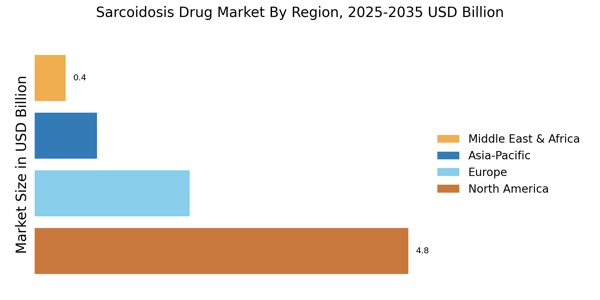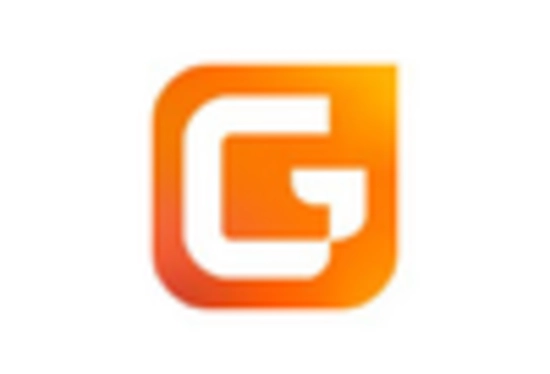Growing Awareness and Advocacy
The rise in awareness and advocacy surrounding sarcoidosis is a significant driver for the Sarcoidosis Drug Market. Patient advocacy groups are playing a pivotal role in educating the public and healthcare professionals about the disease, its symptoms, and the importance of early diagnosis. This increased awareness is likely to lead to more patients seeking medical attention, thereby driving demand for effective treatments. Furthermore, advocacy efforts are pushing for more research funding and better healthcare policies, which can enhance the overall landscape for drug development. As awareness continues to grow, the Sarcoidosis Drug Market is poised for expansion, with a focus on meeting the needs of an informed patient population.
Emergence of Targeted Therapies
The emergence of targeted therapies represents a transformative trend within the Sarcoidosis Drug Market. Advances in molecular biology and genetics have paved the way for the development of drugs that specifically target the underlying mechanisms of sarcoidosis. This shift towards precision medicine is likely to improve treatment efficacy and reduce side effects compared to traditional therapies. As more targeted therapies enter the market, they may offer new hope for patients with varying disease manifestations. The Sarcoidosis Drug Market is expected to evolve rapidly as pharmaceutical companies invest in research and development of these innovative treatment options, potentially reshaping the therapeutic landscape for sarcoidosis.
Rising Prevalence of Sarcoidosis
The increasing incidence of sarcoidosis is a primary driver for the Sarcoidosis Drug Market. Recent estimates suggest that the disease affects approximately 10 to 20 individuals per 100,000 people annually, with variations across different demographics. This rising prevalence necessitates the development of effective therapeutic options, thereby stimulating market growth. As awareness of the disease expands, more patients are being diagnosed, which in turn drives demand for innovative treatments. The Sarcoidosis Drug Market is likely to see a surge in investment as pharmaceutical companies aim to address this unmet medical need, potentially leading to the introduction of new drugs and therapies tailored to specific patient populations.
Advancements in Diagnostic Techniques
Innovations in diagnostic methodologies are significantly impacting the Sarcoidosis Drug Market. Enhanced imaging techniques and biomarker identification have improved the accuracy of sarcoidosis diagnoses, allowing for earlier intervention. This advancement is crucial, as timely treatment can mitigate disease progression and improve patient outcomes. The market is witnessing a shift towards more precise diagnostic tools, which not only facilitate better patient management but also create a demand for targeted therapies. As healthcare providers increasingly adopt these advanced diagnostic techniques, the Sarcoidosis Drug Market is expected to expand, with a focus on developing drugs that align with the specific needs identified through these improved diagnostic processes.
Increased Funding for Research Initiatives
The Sarcoidosis Drug Market is benefiting from heightened funding directed towards research initiatives. Government and private organizations are recognizing the need for more comprehensive studies on sarcoidosis, which has historically been under-researched. This influx of funding is likely to accelerate the discovery of new therapeutic agents and enhance understanding of the disease's pathophysiology. As research progresses, it may lead to the identification of novel drug targets and the development of innovative treatment options. The increased financial support for research initiatives is expected to catalyze growth within the Sarcoidosis Drug Market, fostering an environment conducive to scientific breakthroughs.


















Leave a Comment